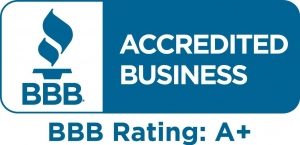By Anna Powers, ND, Bioenergetic Practitioner
Mold is part of the cleanup crew of life. It helps break down debris, so it can return to the earth.
To grow, mold needs high humidity and a cellulose-based fuel source such as wood, plants or sheetrock. Mold spores can be tracked into our homes from shoes, clothing, pets, plants, and used furniture to name a few. High humidity enables the spores to proliferate on walls, furniture and carpets.
While the presence of mold in a home can be simply a nuisance to some, it can create significant health issues for others. About 25% of the population is allergic to mold and/or lacks the ability to process it within their bodies. That is why one member of the family can be fine and another member of the family can become extremely ill.
In sensitive individuals, mold exposure can cause immune suppression, eye irritation, inflammation, wheezing, coughing, asthma, sinusitis, headaches, tinnitus, dizziness, nausea, poor memory, digestive issues, fibromyalgia, joint pain, fatigue, brain fog, insomnia, numbness, tingling, rashes, lethargy, rapid weight gain, Mast Cell Activation Syndrome (MCAS) and more.
Of course, mold is not the only cause of these symptoms.
Mold spores enter the body through the sinuses or lungs, which provide a moist environment to breed. In 1999, Mayo Clinic researchers studied 210 patients with chronic sinusitis and discovered fungus in 96% of the patients’ mucus. They identified a total of 40 different kinds of fungi in these patients, with an average of 2.7 kinds per patient.
Once a patient is removed from a toxic mold environment, the detoxification process requires time and patience. It typically involves supporting the nervous system and vagal system, opening the body’s detoxification pathways such as the lymph, liver, and kidneys, and adding binders to escort the mold and mycotoxins out of the body.
The best way to prevent mold growing in your living spaces is to keep the humidity below 50% and clean your home regularly. A humidity meter can be purchased to monitor levels. If humidity is above 50%, it’s best to get a whole house dehumidifier, or a portable one for affordability. If a leak is found, it needs to be fixed immediately.
If mold is found in porous areas of your home, whatever you do, do NOT bleach it! Bleach only kills mold on non-porous surfaces such as a stainless steel sink. Since bleach is over 90% water, spraying bleach on a porous surface, such as drywall, only lightens the mold and evaporates it on the surface. It is still able to saturate the sheetrock underneath with water, enabling the mold “roots” to proliferate. In addition, bleach is thought to cause mold to release mycotoxins, which can be much more toxic than mold itself. Mycotoxins attach to dust particles that are carried throughout the home and create a much bigger problem.
We suggest using EC3 Mold Spray because it works by disrupting the chitin shell of the mold spore so that it is non-viable and cannot proliferate. It doesn’t clean mold or stain, but it does reduce its toxic impact.
If you suspect mold growth in your home, you need to remediate a leak, or you want to clean the air ducts, it’s optimal to use a professional service who understands the physiological impact of mold and can help you determine if there is a mold problem and how to remediate it safely. Here are some questions to ask:
- How long have you been in business?
- Do you use negative pressure containment around the contaminated area?
- How do you ensure workers in the contaminated area do not spread mold through the rest of the house?
- Do you use an air scrubber after mold is removed?
- Do you use a third-party company to perform before and after air quality tests?
- Do you offer a warranty?
- Do you have three customers I can speak with?
If you suspect mold is impacting your health, we encourage you to schedule an appointment with one of Longevity’s knowledgeable and experienced bioenergetic practitioners. Our team can help you identify if mold or other toxins are burdening your system, and help you with a customized detoxification protocol. Learn more at LongevityHealth.com.

